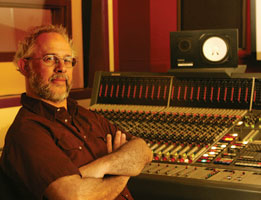|
|
Little Things That Matter |
July 2005 |
|
In this month's cover story, ĺ─˙Build A Desktop Studio on Any Budgetĺ─¨ (p. 48), we expended a lot of ink discussing which products we would buy if we were putting together or retooling our PC- and Mac-based studios. If you follow our lead but take into consideration your specific studio needs and goals, you can build a terrific rig. But there are many computer-related considerations that we didn't discuss in the story. You already know most of them, but based on the reader emails we receive, some of you tend to overlook them. So I'm going to do you a favor and remind you!
For starters, if you can afford to dedicate a computer to studio applications, do it. A friend of mine has long dedicated a computer to his DAW and plug-ins. Other than the operating system and music-production tools, there is no other software on the machine, which is why it's speedy, reliable, and never crashes. I'd add backup software and a Web browser for downloading and registering updates, but my friend rarely updates his software, since his current system does the job.
We've written before about installing a stripped-down version of OS X (see ĺ─˙Tracking the Big Catsĺ─¨ in the September 2004 issue), and many preconfigured, Windows-based music computers are based on optimized versions of XP. These modifications, if properly done, increase system stability and optimize your system for music production, but you need to know the OS pretty well to pull it off.
Some of us can't afford more than one computer, and many of us lack the confidence and knowledge to optimize the OS. But we can disable applications that process in the background and periodically interrupt the CPU, such as antivirus and fax software, software firewalls, and some specialized utilities. If you disable firewall and antivirus software, you should physically disconnect your computer from the Internet (especially with broadband connections), and then reenable the security products if you go online to download updates or register new software. If you are using Mac OS X, avoid Classic; it adds to your CPU load and potentially detracts from stability. I recently replaced my last pre-OS X app on both of my computers, and good riddance.
Back up your files daily to a local hard drive for immediate use, and to DVD-RW or a portable hard drive that you can store off-site or in a fireproof box. Backup programs such as Dantz Retrospect create compressed archives or a set of duplicate files, but the latter slowly overwrites the entire backup set. I prefer file synchronization that creates uncompressed, immediately usable copies and overwrites only files that have changed. I'm delighted with Econ Technologies' ChronoSync for OS X (www.econtechnologies.com), which is fast, flexible, and meets all of my criteria. I can't make Windows recommendations; I know the OS has backup features, but you might want more. Windows experts should feel free to write us at emeditorial@primediabusiness.com with suggestions.
Enough reminders ĺ─ţ we've got a great issue this month, so enjoy! |
